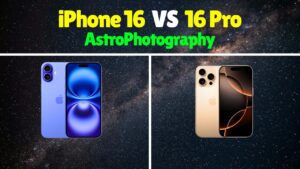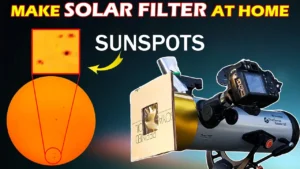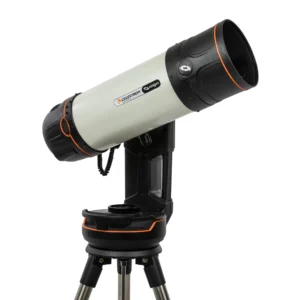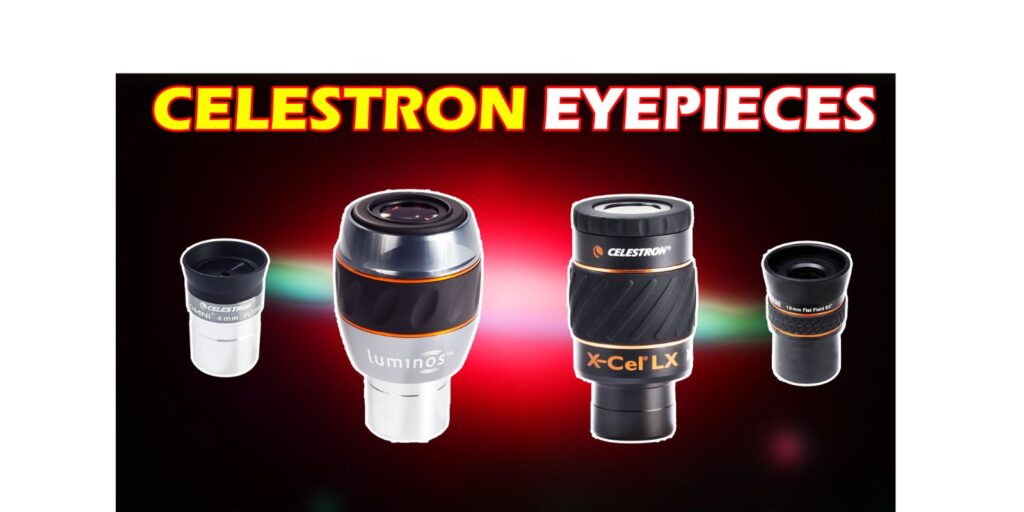
An eyepiece is one of the important parts of a telescope. At some point in your stargazing journey, you will need to buy better eyepieces. In one of our previous articles, we explained in detail the basics of an eyepiece. Before buying any eyepiece, you need to know, why you want a new eyepiece. There can be two reasons for this. One is you want better views. It is possible that your current eyepieces don’t have very good results & you want to upgrade to good quality.
The second reason is that you want to cover particular magnifications, which you can’t get with your current set of eyepieces. So buying the right eyepiece is kind of a task.
As the Celestron telescopes are classified into different types of series. Similarly, the Celestron eyepieces are also classified into different types of series. Today in this article we will briefly see the different series of eyepieces manufactured by Celestron.
“Omni” eyepiece series.
Omni series eyepieces are simpler and cheaper. In the Omni series, all the eyepieces are the Plössl eyepieces. The Plössl eyepieces are very popular. These eyepieces are perfect for the price you pay for.
These eyepieces have a coating for maximum light transmission. There are 7 eyepieces in this series. They are in the range of ranges from 4mm to 56mm. All of them offer a 50-degree field of view.
The design is sturdy and the build quality is high. The optics of these eyepieces are superb. Overall the eyepieces in this series are very cost-effective.
One thing to note is that if you already got Plössl eyepieces with your telescope, then going with Omni eyepieces will not have a huge advantage. If you got something simpler with your telescope, like the Kellner eyepieces then an Omni series eyepiece will be a good choice.
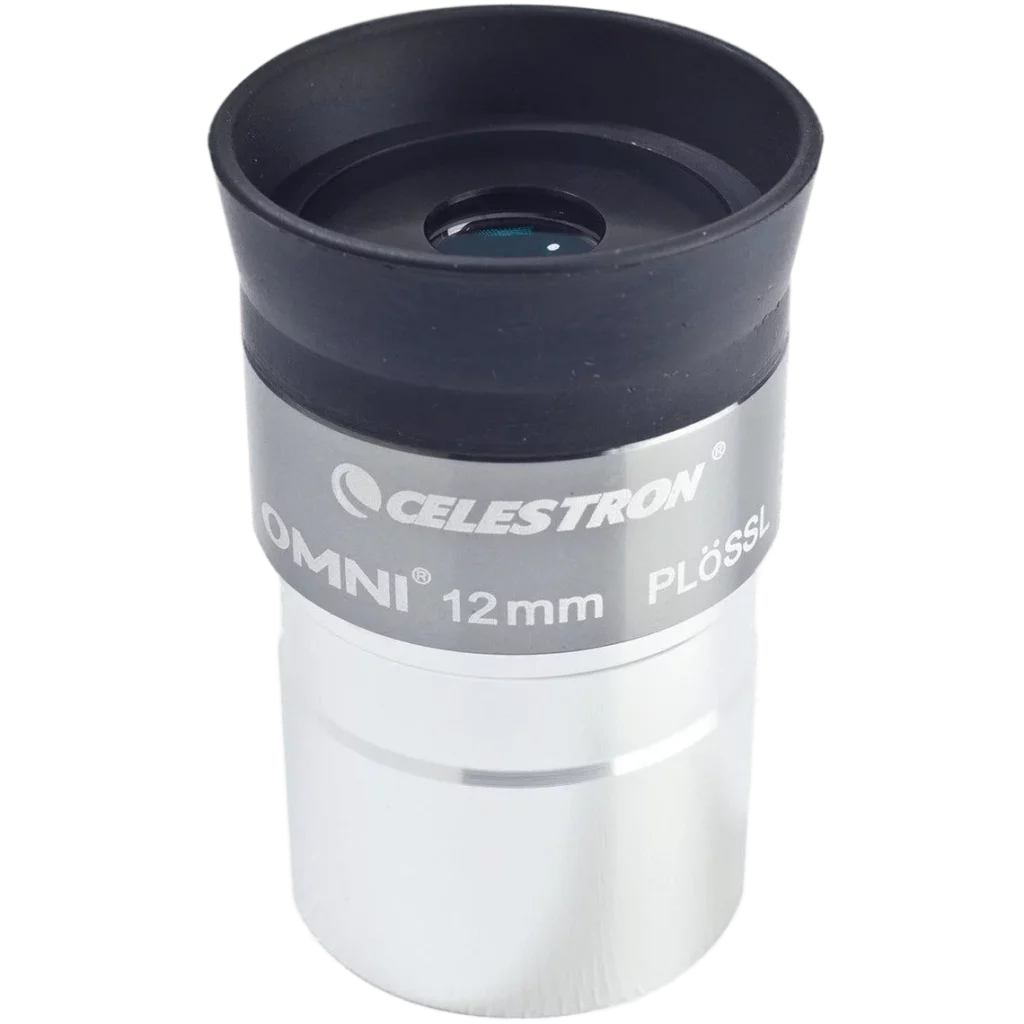
“E-lux” eyepiece series.
This series of eyepieces offer you the more light-gathering capacity to enjoy low light wide field views. There are three eyepieces in this series 26mm, 32mm & 40mm. All of them are multi-coated eyepieces. One also an important thing to notice is that all the eyepieces in this series have a 2-inch barrel size.
This series offers a 56-degree apparent field of view which allows you to view larger celestial objects. These eyepieces are 3-element Kellner eyepieces. These eyepieces have rubber eyecups and long eye relief. So, using these eyepieces for people with and without eyeglasses will be easier.
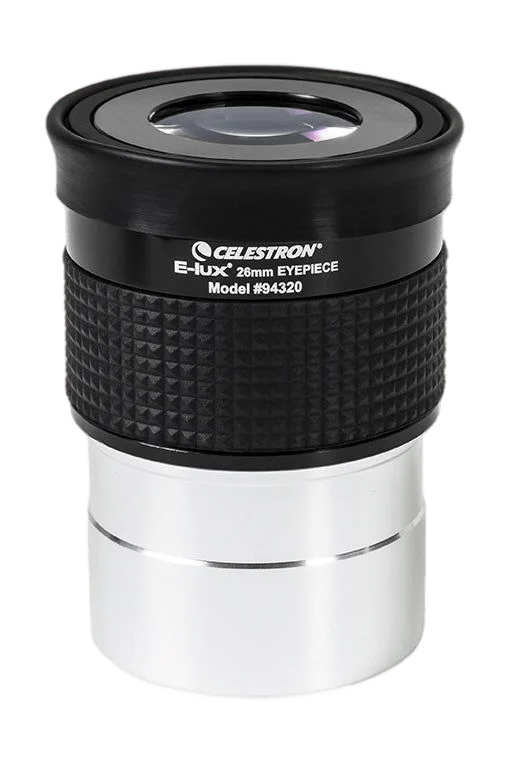
“X-CEL LX” series.
These Celestron eyepieces have 6 elements optical set. They have high transmission and are fully multi-coated. They are usually optimized for planetary viewing & offer a 60-degree apparent field of view. This field of view will be enough for viewing the moon, planets, and many deep space objects.
There are 7 eyepieces & 2 Barlow lenses in this series. All these eyepieces are parfocal, which means that you can easily switch to another focal length of this series and your telescope will not lose focus.
All these eyepieces have 16 mm of eye relief. It is good for people who wear glasses. The black-colored body of these eyepieces is made from anodized aluminum. These eyepieces have pop-up eyecups. It makes it easy for spectacled and non-spectacled people to use the eyepiece conveniently.
These eyepieces have a thread-like rubber grip on the outer side. It is useful while handling these eyepieces in moist weather. Its grip provides a slight cushion for shock absorption if it falls on the side.
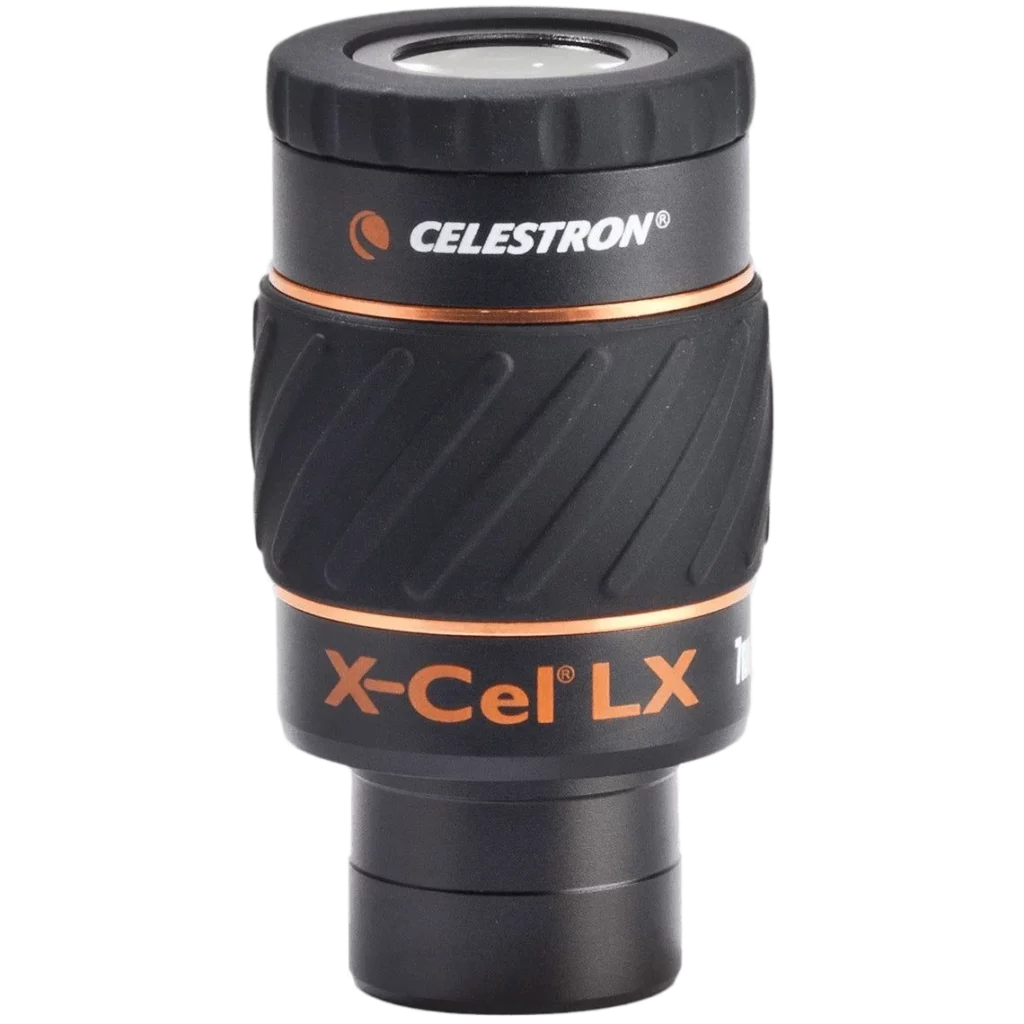
“Luminos” eyepiece series.
When you want to look at deep space objects such as galaxies or nebulae. Then you do not need high magnification. Galaxies and nebulae look good when you see them as a whole. For viewing deep space objects you need a wide field of view. The luminous eyepiece series of Celestron does exactly that. The eyepieces have 82 degrees of apparent field of view.
There are 6 eyepieces and one 2.5X Barlow lens in this series. The first smaller 3 eyepieces have a 1.25-inch barrel size and the other three bigger eyepieces have a 2-inch barrel size.
These eyepieces have 6 to 7 lens elements that work together to give you a flat 82 degrees of apparent field of view.
All the eyepieces in this series are parfocal. These are somewhat premium eyepieces and will cost you a little bit of money. If you want a good image quality then you need these eyepieces.
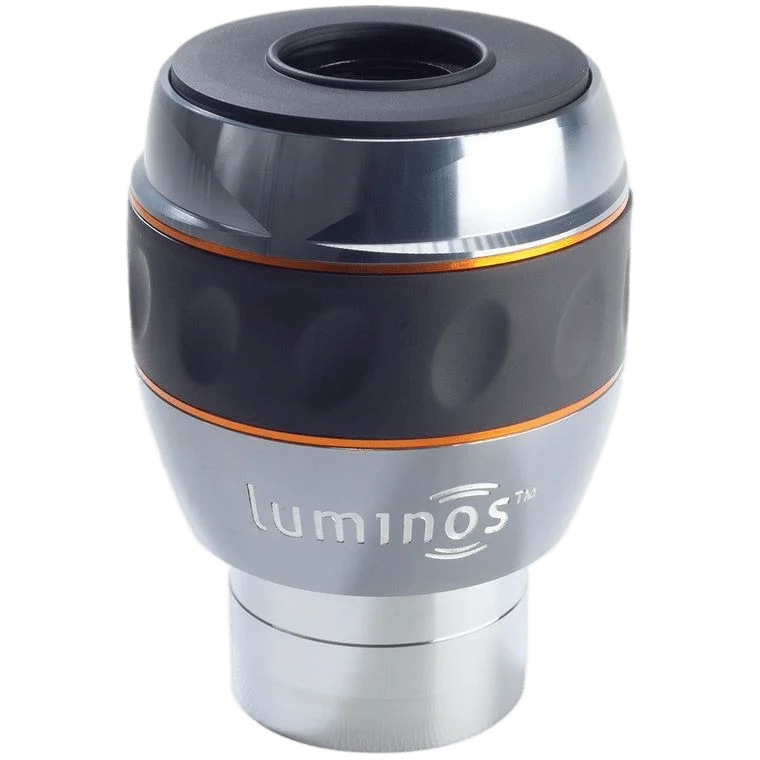
“Ultima Edge” eyepiece series.
The name of the series is Ultima Edge. The eyepieces in this series give sharp views from the center to the edge of your field of view.
You get a slightly curved field of view when you have a normal eyepiece. The image also loses quality around the edge. This is not much of a problem when you observe through a telescope but it is a problem while doing astrophotography. So these flat-field eyepieces were created to provide an ultra-sharp, ultra-clear, crisp image from the center to the edge of the field of view.
There are 5 eyepieces in this series. Out of five first 4 have a 1.25-inch barrel size and the biggest one has a 2-inch barrel size. These eyepieces have 5 to 8 lens elements. All these lenses are multi-coated for maximum light transmission.
All these Celestron series eyepieces are also parfocal within Ultima Edge Series. The eye relief of these eyepieces ranges from 16mm to 29mm. So they are good for both glass wearer and no glass wearer types of observers. These eyepieces are premium and will cost you a little bit of money. If you are looking for all those crisp and sharp images then this series of eyepieces is for you.
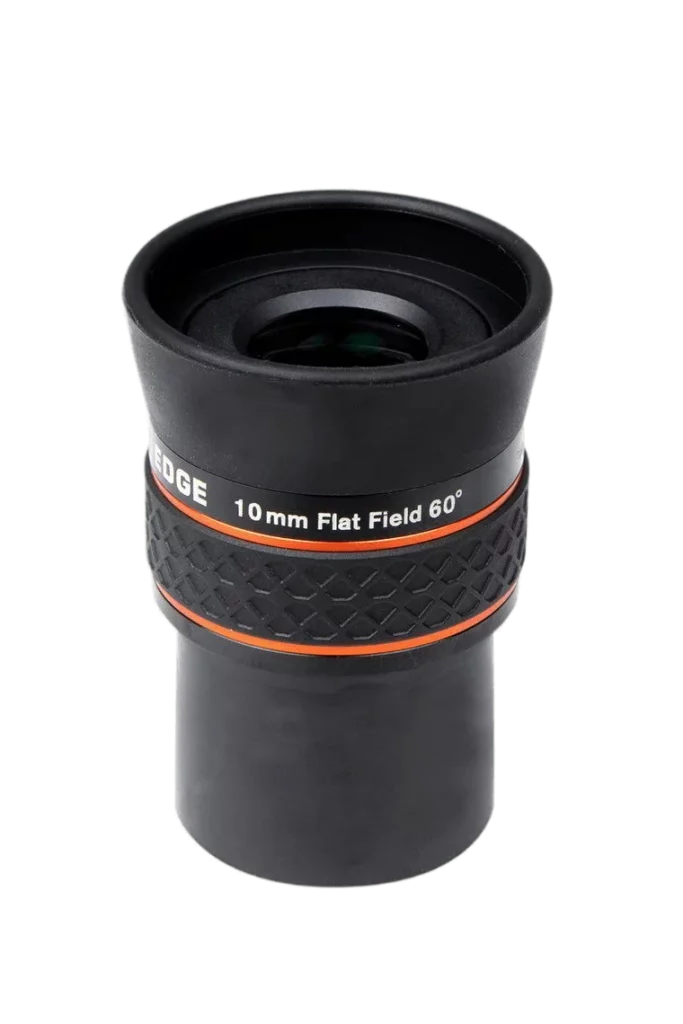
We hope you understand the different series of eyepieces offered by Celestron and the purpose of each eyepiece series. If you are looking for a telescope specifically for astrophotography then you need to check this article. You can also find the best suitable telescope for you with our telescope suggestion tool.


